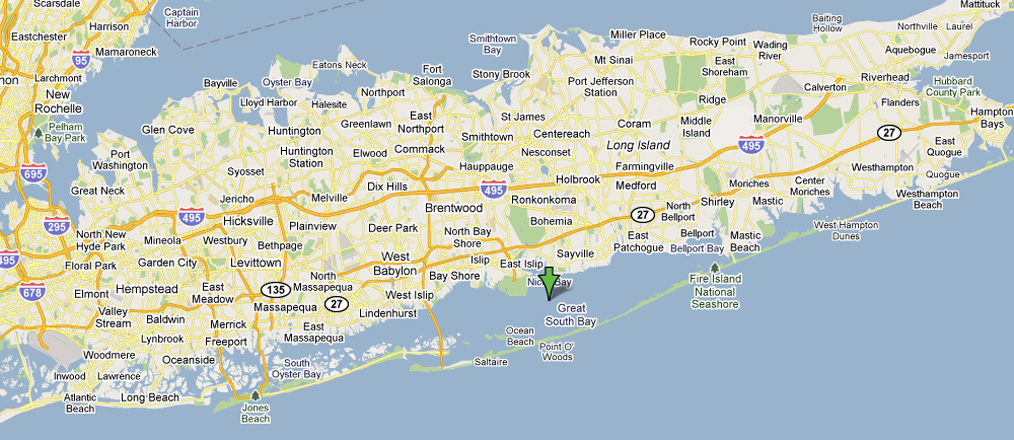The price of pollution is more costly than you think
The article below is the final of four articles submitted to the Herald by West Hempstead High School sophomore Steven Trezza, a Boy Scout with Troop 240 in pursuit of the rank of Eagle Scout. Working to achieve the rank, Steven launched a community service project aimed at protecting local waterways through education and awareness.
Calling attention to the need for such protection was the first step of Steven’s West Hempstead Storm Drain Project. To that end, Steven helped place more than 800 “No Dumping — Drains to Bay” medallions on storm drains throughout the hamlet and neighboring communities within the Town of Hempstead.
The next step was to explain to the community what the medallions mean and why they are there. To carry out this piece of the project and in the hope of reaching a greater audience to further spread awareness, Steven submitted to the Herald a series of articles about his project.
As this is the final of Steven’s four articles, the Herald wishes to thank Steven for his important and necessary work and for his unrelenting efforts to educate the public. The Herald is glad to have provided Steven a forum through which to accomplish his goal.
The Herald also encourages residents from West Hempstead and surrounding communities to visit Steven’s website and continue to educate themselves about the importance of our local waterways. These are our communities, our hometowns, where we live and raise our children — it is up to us to keep them clean and safe and sustainable.
Good luck, Steven, and keep up the good work.
By STEVEN TREZZA
I must confess: I was guilty of throwing things into the storm drain in front of my house and so was my family. There was a time when we would bring plastic bags with us when we walked the dog and then threw the bags into the storm drain. If I came across a bottle, plastic container or trash lying on the curb in front of my house I kicked right into the storm drain. In the fall, when it was time to drain the pool we put the hose right into the drain. Speaking of fall; what happens when leaves pile up in front of the storm drain and it rains? A miniature Hall’s Pond forms; followed by the ever-popular ritual of “shoving the leaves into the drain” while trying to keep your feet out of the puddle.
Why all the fuss over storm drains? Studies have shown that pollution carried by storm-water runoff is linked to both poor water quality in our bays and Brown Tides. Brown Tides are associated with a reduction in eelgrass meadows (necessary for clams and scallops to thrive), a reduction in seabird populations, an absence of crabs and horseshoe crabs, and poor fishing. You may be thinking that eelgrass sounds disgusting, you’re allergic to shellfish and horseshoe crabs are ugly so why should you care about them? Well, if you care about money and our local economy, then you might want to think twice about storm drains.
At one time, New York provided more than half of the nation’s hard clams and the Great South Bay was referred to as the world’s richest clam factory. In 1976, more than 700,000 bushels of clams were harvested from the Bay, and there were more than 8,000 licensed baymen. The “wholesale” value of the hard clam fishery at its peak in 1976 was approximately $12 million. In 2002, the harvest was less than 50,000 bushels. In 2008, the dockside value of the hard clams was at its lowest — a mere $600,000. Today, less than 10,000 bushels of clams are harvested from the bay and the number of baymen harvesting clams has decreased to several hundred.
In 1982, the harvest of 500,000 pounds of bay scallops from the Peconic Estuary accounted for 28 percent of all U.S. commercial landings and had a dockside value of $1.8 million. In 1987, New York’s harvest was valued at less than $3,000 and its 373 pounds constituted less than 1 percent of the national bay scallop production. The scarcity of scallops after the 1985 Brown Tide has created a huge void for the communities in eastern Long Island. The money and the activity that the industry had been generating are gone.
Today, there is renewed interest in improving the Great South Bay. Information about what non-profit organizations and local elected officials have been doing about this issue is available at www.stormdrainproject.webs.com or www.operationsplash.net.

 47.0°,
Mostly Cloudy
47.0°,
Mostly Cloudy 




